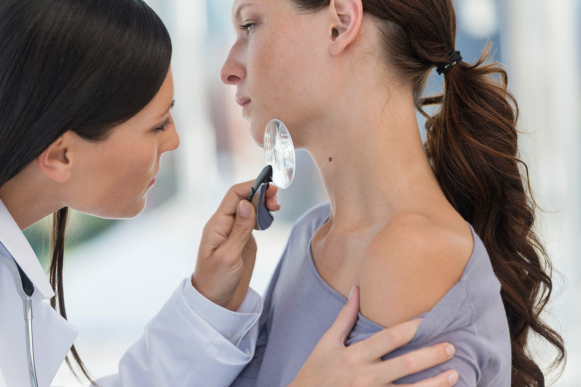Skin rashes can be both uncomfortable and embarrassing. Although most rashes can be resolved with treatment, you can’t treat the rash properly until you understand its cause. Use the information below to identify some of the most common troublesome skin conditions.
Eczema/Atopic Dermatitis
Eczema, or atopic dermatitis, is most common among infants and children but may continue into adulthood. The eczema rash is often red, scaly, itchy and/or weepy. It is most likely to occur on the elbows, knees, ankles, wrists, neck or cheeks.
Psoriasis
Psoriasis is an auto immune disease that produces a red, scaly rash that flakes and falls off. Some people describe psoriasis flakes as “silvery.” Psoriasis can itch, burn or sting. Often times psoriasis will present itself on the scalp and hairline.
Eczema Versus Psoriasis
Some people may have difficulty determining whether a rash is caused by eczema or psoriasis. According to the National Psoriasis Foundation, psoriasis plaques have edges that are more defined. Eczema rashes, on the other hand, are flatter and less defined. Eczema typically occurs on the elbows or knees, while psoriasis is most common on the scalp, face, palms, feet and lower back.

Hives
Hives are red, itchy bumps that appear suddenly and then disappear within eight to 12 hours. They may be caused by stress or by an allergic response. Hives can be localized on a specific body part such as the face, or present all over your body.
Heat Rash
Heat rash occurs when the weather is hot and humid. It typically presents as a cluster of blisters or pimples and may occur in the groin, under the breasts, on the chest or on the neck. Heat rash may be itchy.
Seborrhoeic Dermatitis
Seborrheic dermatitis occurs mainly on the scalp but may spread to the cheeks, ears, eyebrows and/or forehead. The condition is characterized by a scaly rash with yellow flakes that adhere to the skin.
Contact Dermatitis
Contact dermatitis occurs after the skin has been exposed to an irritant, such as a chemical or allergen. The rash is often itchy and red, and it may also produce blisters or pustules. In some cases, the blisters may burst and rash may ooze.
Dry Skin
One of the easiest conditions to treat is dry skin. Symptoms of this condition may include:
- Itching all over no rash
- Redness
- Flaking
Other Skin Issues
Although rashes are often related to an underlying skin condition, they can also have other causes. For example, viral infections like herpes and chickenpox can cause itchy or painful blisters that are not related to a problem with the skin itself. In such cases, you may have other symptoms, such as nausea, coughing or fever. Similarly, the Mayo Clinic reports that itching without a rash can be caused by an internal problem, such as liver or kidney disease, or by nervous system dysfunction.
Most rashes can be identified using the information above. However, if you have a rash that cannot be identified and/or does not resolve with home treatment, visit your dermatologist for further evaluation.



